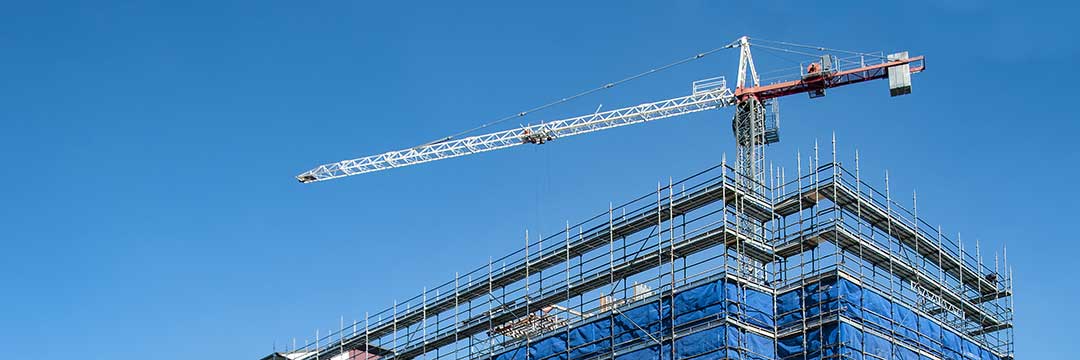Ensure that your project is in keeping with the latest regulations
The Australian Building Codes Board (ABCB), on behalf of the Australian government, released the National Construction Code (NCC) 2022 on October 1 2022, which will come into force on May 1 2023. This seven-month delay until the new regulations become mandatory was put in place to allow the construction industry a chance to adapt to the new regulations.
Here at Fox Management Group, we are well-versed in all construction systems and processes, and can ensure that your project is in keeping with the latest regulations.
Overall, the ABCB has ensured that most buildings that meet NCC 2022 requirements will, by default, either meet or exceed those requirements made by NCC 2019. However, it should be noted that there are some exceptions to this rule.
For example, a significant concession in C2D10 of National Construction Code 2022 Volume One ‒ which deals with all manner of buildings except for stand-alone houses and non-habitable structures such as garages, sheds and retaining walls ‒ means that combustible thermal breaks are allowed in certain types of external wall systems. This concession does not appear in NCC 2019.
Volume Two of the NCC 2022 deals with structures not covered in Volume One, with the two volumes collectively forming the Building Code of Australia, while Volume Three forms the Plumbing Code of Australia.

Changes To The Layout And Structure
One of the most significant changes between the NCC 2019 and the NCC 2022 is the document’s layout, which has been altered to be much less daunting and more accessible, consistent and referenceable.
The NCC 2019 and previous iterations had a notoriously complex and inconsistent structure and layout, causing construction industry practitioners to have difficulty applying or fully comprehending all of the regulations.
The new layout and structure are called “Section-Part-Type-Clause” and are explained in the NCC 2022 preface.
The NCC 2022 includes handy references back to equivalent clauses in the NCC 2019, allowing for the swift identification of new clauses and additions.
Notable Changes
Several aspects of the new NCC feature expanded requirements for energy efficiency and condensation mitigation, new liveable housing provisions, as well as new requirements for lead-free plumbing products to be used.
These new provisions could present a particular challenge for the construction industry; thus, they will only come into effect on October 1, 2023 ‒ a full 12 months after the new codes were originally released ‒ to allow extra time for practitioners in the industry to effect transitional arrangements that accommodate these particular new requirements.
Liveable Housing Design
This new provision aims to ensure that housing is designed with the needs of the community firmly in mind, with particular attention given to the elderly and those with physical disabilities that affect their mobility.
Under this provision, single dwellings and sole occupancy units ‒ Class 1a and Class 2 buildings ‒ are required to have at least one step-free entrance, internal hallways and doorways that allow for unimpeded movement, and toilets, bathrooms and showers that can facilitate independent use. Moreover, these facilities need to be built in such as way as to allow for handrails to be installed with minimal effort.
Early Childhood Centres
The NCC 2022 makes specific provisions for early childhood centres aimed at improving children’s safety. These Class 9b buildings will now require several additional features that make the evacuation of children easier and faster in the case of emergencies, such as the requirement for such facilities to have more child-friendly handrails.
Construction In Bushfire Prone Areas
The NCC 2022 expands the requirement for bushfire-resistant construction techniques to be applied to more building classes.
Previously, only three types of building classes were included in these regulations when located in bushfire-prone areas. The NCC 2022 now lists five building classes that need to meet the requirements.
The aim of this amendment to the previous regulations is to ensure better safety for those who are vulnerable.
Energy Efficiency Ratings
One of the most notable changes is how new residential buildings will be rated in terms of their energy efficiency. This will bring about a complete overhaul of the Nationwide House Energy Rating Scheme (NatHERS).
The NatHERS energy rating scheme rates the energy efficiency of a residential building out of ten, taking into account construction materials, technological features and design choices. Currently, a minimum rating of 6/10 is required for new homes. However, under the new regulations, a minimum of 7/10 will be required.
With more than 150 000 new homes being built in Australia every year, these new energy rating provisions will hopefully help the country achieve its goal of transitioning to a net zero future.
Industrial and commercial construction management services
With the updated NCC 2022 regulations coming into effect next year, we at Fox Management Group are ready and able to provide you with industrial and commercial construction management services, helping you ensure all of your responsibilities towards the law and your clients are met. Contact us now!

0 Comments